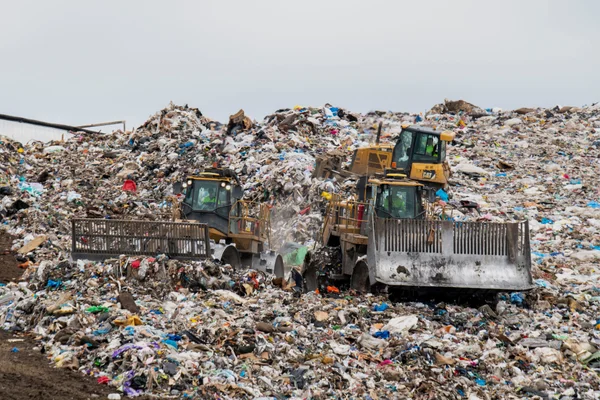Green Revolution of Methane Resource Utilization in Landfills

Under the dual challenges of global warming and energy transformation, landfills, a traditional pain point in environmental governance, are quietly becoming a potential place for the development of new energy. The greenhouse effect of methane gas produced by the decomposition of organic matter in landfills is more than 25 times that of carbon dioxide, but if it can be safely captured and converted into energy, it can achieve a gorgeous transformation from “pollution source” to “clean energy”. In this process, efficient and accurate methane detection technology has become the core support for ensuring safety and efficiency.
1. Landfills: From Environmental Burden to Energy Treasure House
About 1.2 billion tons of garbage are landfilled every year in the world, and the resulting methane emissions account for 11% of the total emissions from human activities. The methane collection rate of traditional landfills is generally less than 60%, and a large amount of gas escape not only exacerbates the greenhouse effect, but also poses a risk of explosion. However, as a high calorific value clean fuel, methane itself can generate 2.5-3 degrees of electricity per cubic meter. In theory, the annual power generation of a medium-sized landfill can meet the electricity needs of tens of thousands of households. By building a gas collection system, methane can be used for generators, purified as vehicle fuel or connected to the municipal gas pipeline network, which can not only reduce carbon emissions but also create considerable economic value. The Puente Hills landfill in Los Angeles, USA, reduces carbon dioxide emissions by 1.6 million tons per year through a methane power generation project, which is equivalent to planting 40 million trees.
2. The key to safe utilization: breakthroughs in intelligent detection technology
The core challenge of methane resource utilization lies in the accurate monitoring and leakage prevention of gas. Traditional manual inspections have defects such as low efficiency, many blind spots, and slow response, which makes it difficult to meet the safety management needs of large-scale landfills. The emergence of laser methane telemeter has completely changed this situation: detection equipment equipped with TDLAS (tunable diode laser absorption spectroscopy) technology can detect methane concentration non-contactly at a distance of 300 meters by analyzing the attenuation of lasers of specific wavelengths. When integrated into the drone platform, the equipment can perform grid scanning at a speed of 50 square kilometers per hour, and with a response speed of 10 milliseconds, it can issue an early warning at the beginning of gas diffusion.
3. Technological innovation of intelligent inspection system
The modern methane detection system has formed an integrated monitoring network of “air, space and land”. The visible light sensor and laser rangefinder integrated in the laser methane telemeter can generate leakage heat maps with geographic coordinates in real time. Take a smart landfill management system as an example: the drone automatically executes the inspection route every day, automatically marks the GPS coordinates and sends back three-dimensional point cloud data when abnormal concentration is found, and the ground robot immediately goes to the site for review, and the management platform simultaneously generates a disposal plan including concentration curve and diffusion simulation. This closed-loop management of “discovery-positioning-repair” has increased the methane collection rate of the landfill from 58% to 92%, and increased the annual power generation by 24 million degrees.
4. Technological evolution direction of green future
With the integration of the Internet of Things and AI technology, methane monitoring is moving towards intelligent prediction. The new generation of detection equipment has begun to embed machine learning algorithms, which can predict high-risk areas 72 hours in advance by analyzing historical leakage data and meteorological parameters. The digital twin system developed by an environmental protection company in Singapore can simulate the gas migration law of the landfill in real time and guide the dynamic adjustment of the collection well. It is estimated that by 2030, the global landfill gas energy market will exceed US$9 billion, and the iteration of intelligent detection technology will continue to reduce operation and maintenance costs and improve project economics.
Driven by the goal of carbon neutrality, the role of landfills is undergoing a fundamental change. Through the empowerment of innovative technologies such as laser methane telemeters, the former “environmental negative assets” have not only become an important source of renewable energy, but also built a smart closed loop for urban solid waste management. This model of deep integration of environmental governance and energy development is providing a valuable Chinese solution for the global green transformation. When the light of science and technology illuminates every corner of the landfill, we will not only gain clean energy, but also the key to a sustainable future.




